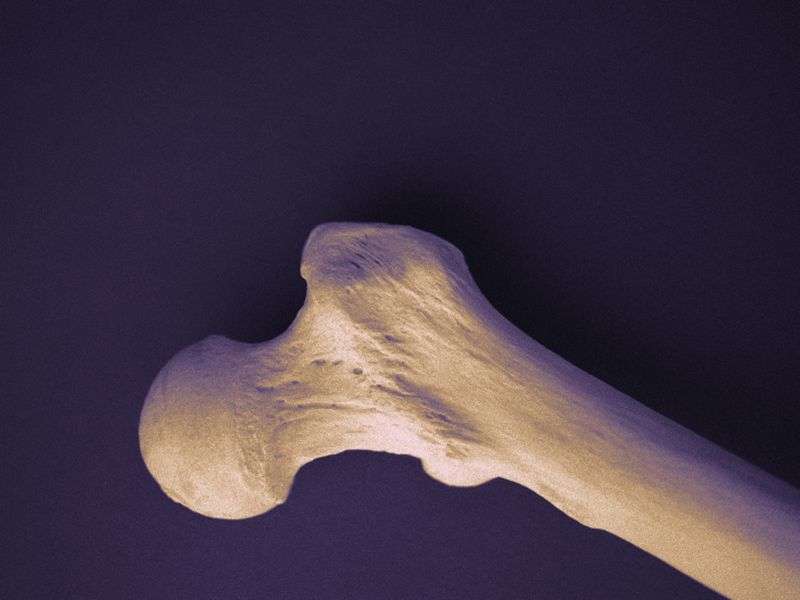PPI use ups risk of osteoporosis, osteopenia in femur

(HealthDay)—Proton pump inhibitor (PPI) use is associated with increased risk of developing osteoporosis and osteopenia in femur bones, according to a study published online May 31 in the International Journal of Rheumatic Diseases.
Abbas Arj, M.D., from the Kashan University of Medical Sciences in Iran, and colleagues examined the correlation between PPI use and bone mineral density (BMD) in a cross-sectional study involving 80 patients (40 PPI users and 40 PPI non-users) without history of hip fracture. Dual-energy X-ray absorptiometry was performed to quantify femur and posterior-anterior spine BMD in all participants.
The researchers observed significant differences in the mean femoral T-scores for the PPI-user and non-user groups (−0.44 ± 1.11 and 0.19 ± 0.95, respectively; P = 0.007). The exposed group also had significantly greater frequency of femoral osteoporosis and osteopenia than the control group (P = 0.04). No significant between-group difference was noted in mean femoral Z-scores, lumbar spine T-score, or lumbar spine Z-score. In linear regression analysis, no correlation was seen for PPI users and non-users with lumbar spine T-score.
"Overall, the results of this study showed that PPI use in subjects without risk factors of osteoporosis determined by the femoral T-score compared with the control group was associated with increased risk of developing osteoporosis and osteopenia in the femur bones," the authors write.
More information:
Abstract
Full Text (subscription or payment may be required)
Copyright © 2016 HealthDay. All rights reserved.



















